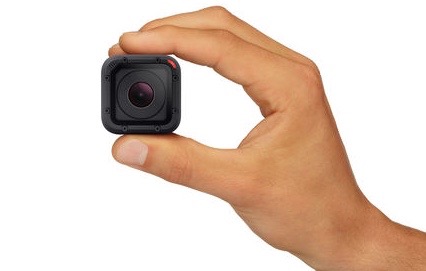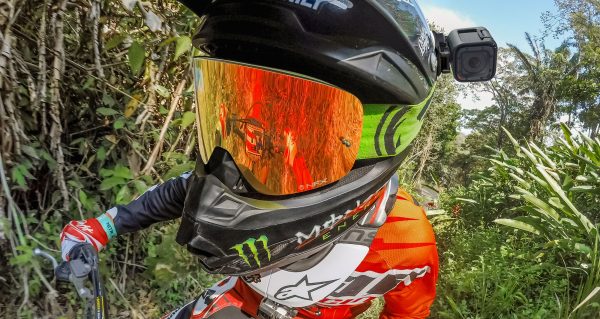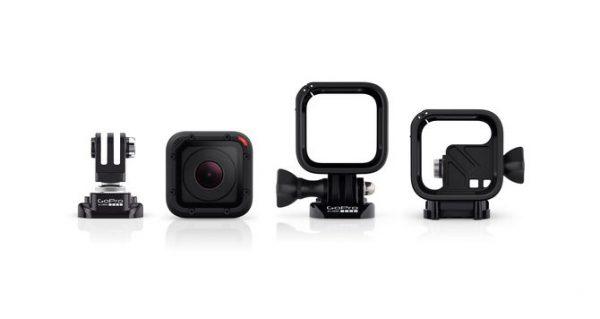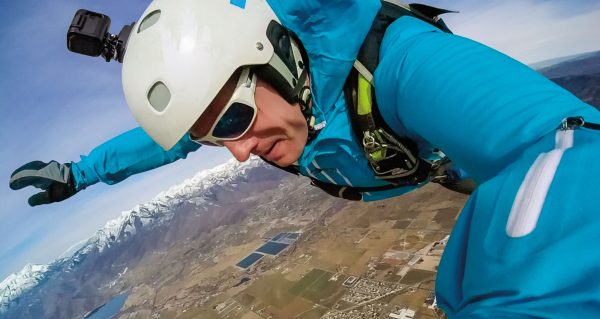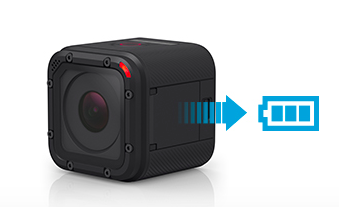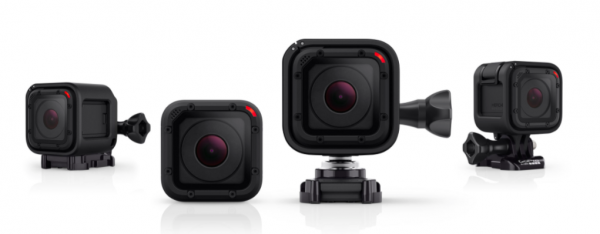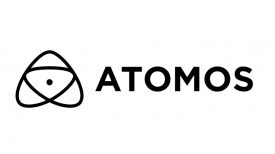By technical editor Matt Allard:
GoPro has surprised the market again, not with a new HERO5, but another addition to the HERO4 line. Called the Hero4 Session, it is 50% smaller and 40% lighter than other HERO4 cameras. The Session weighs just 2.6oz (74g) and has been designed in the shape of a cube with sides 1.5″ (3.81cm) long. It’s reminiscent of a Polaroid Cube camera with GoPro internals.
It won’t record 4K, but it will capture high resolution 2560×1440 footage at up to 30p and 1080p60 video in H.264 as an .mp4 file. If you drop down to 720p you can capture up to 100fps. In photo mode you can capture 8MP single photos, time lapse photos at set intervals from 0.5 to 60 seconds, and burst photos at 10 frames per second.
The HERO4 Session is the first GoPro that doesn’t require a housing if you decide to take it into the water. It’s not quite as water resistant as existing GoPros in a waterproof housing but it will go down to a depth of 33’ (10m). This is a clever move by GoPro – there isn’t much point having an ultra-small camera if you then have to go and put it inside a larger housing. There is no microphone input or HDMI output on the camera.
When the camera is mounted upside down, Auto Image Rotation adjusts the capture orientation to right-side up so there’s no need to flip your footage in post. This is a very handy function given the cube design of the camera and I can definitely see it being mounted upside down on many occasions.
The HERO4 Session comes with newly-designed mounts and accessories that also work with other GoPro cameras. Three new mounts are included with the camera including a low-profile frame, a standard frame and a ball joint buckle. The Session will also work with existing GoPro mounts and accessories – good news for existing GoPro owners.
The HERO4 Session can (indeed, must) be controlled by the GoPro app or Smart Remote. All the features such as frame rates, resolution, and field of view can be adjusted just like any other GoPro.
Unlike other members of the GoPro family, the new HERO4 Session does not have a removable battery, LCD back screen option or additional battery back. The battery is in built in to the camera and, according to GoPro, a full charge will power the camera for up to two hours when recording 1080p 30fps. That drops to around 1hour 30 minutes if you’re recording 1080p 60fps. It can be recharged through a USB connection or wall charger.
There is only one button on the camera: a single press turns the camera on and begins capturing video or time lapse photos automatically. A second press of the shutter button stops recording and powers off the camera. All other settings need to be changed on the GoPro App or Smart Remote. A small flashing light in the top corner lets you know whether you’re recording or not.
Another couple of nice new features are a HiLight Tag, that enables you to mark key moments while recording so you can quickly locate your best clips later for convenient playback, editing or sharing. This can be activated by either pressing the button on the camera or Smart Remote during recording. You can also tag your highlights using the GoPro App. There is also a new dual microphone, that features two mics: one on the front of the camera and one on the back. When you’re filming in windy conditions or during high-speed activities like motorsports, the camera automatically switches to the mic that’s best suited for capturing optimal audio.
There is an auto low light mode that, according to GoPro, intelligently changes frame rates based on lighting conditions for optimal low-light performance, enabling you to move between bright and dark environments without having to adjust your camera settings.
ProTune mode is also available for use with the Hero4 Session which will allow manual control of ISO Limit and Sharpness.
The HERO4 Session is a very interesting addition to the GoPro family. With no need for housings, its compact design is sure to make it a very popular addition to the GoPro family. The camera is so small that I can see multiple HERO4 Session cameras being used where traditionally someone may have only used a single GoPro. By changing the field of view or frame rate on one of the cameras you can greatly enhance your creative options. For news and documentary shooters, the camera is so small, there is no reason why you can’t have one mounted on your main camera all the time to capture a unique perspective.
With the introduction of the HERO4 Session, we could see a whole new market of very small drones and camera stabilisers. The camera’s tiny size and weight would make it very easy to stabilise using very small gimbals, which would open up a whole new world of creative possibilities.
For a great hands on look at the GoPro HERO4 Session head over to THE VERGE.
It is unclear whether the new HERO4 Session is using the same sensor as previous HERO 4 cameras or whether it is an all-new design. The HERO4 Session will retail for $399 US.

